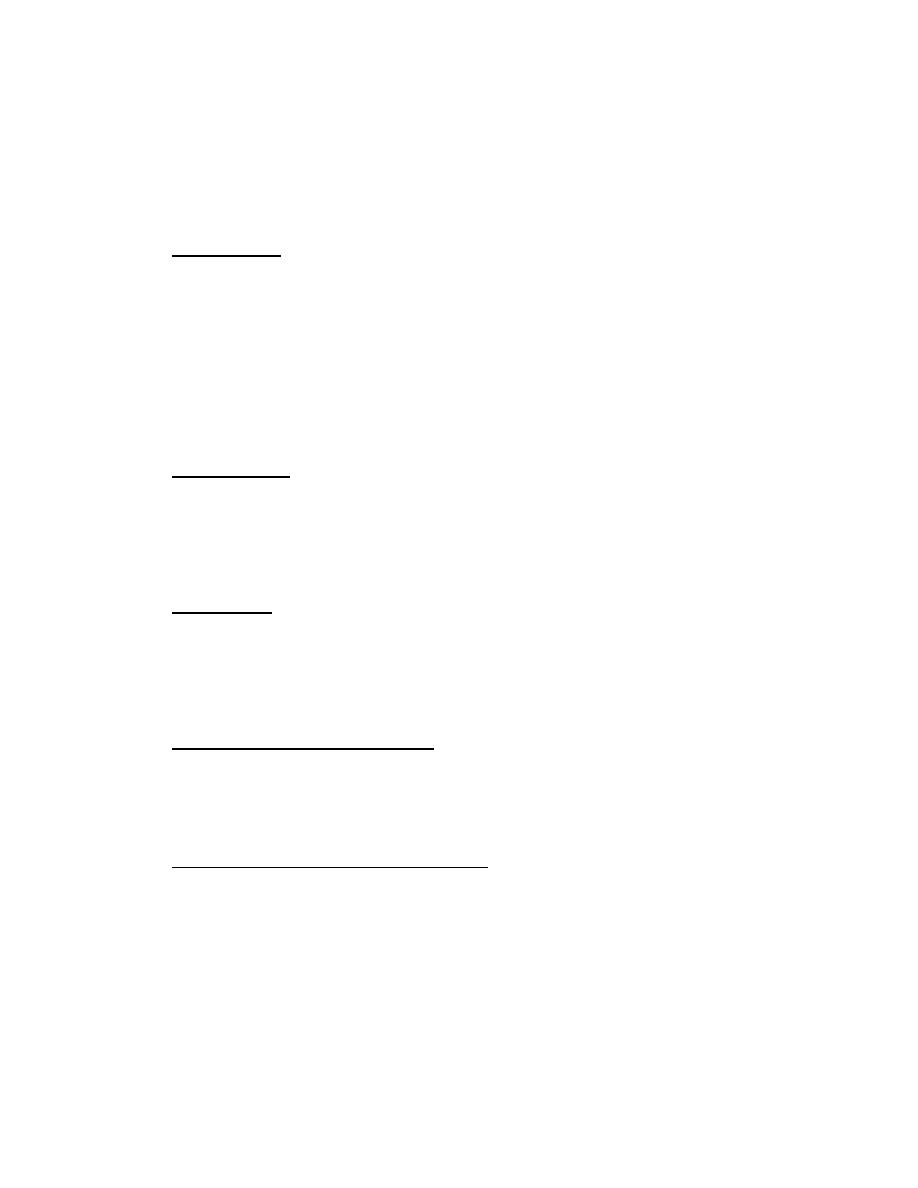
| Tweet |

Custom Search
|
|

|
||
 MIL-HDBK-1038
In the latter case and similar situations where the rotational position of the
shaft is critical, the setscrew tip should seat in a drilled pocket or flat
machined on the shaft to permanently maintain the adjustment. The setscrews
should be of the headless type and those fitted into a pocket should have a full-
dog or half-dog point, those bearing on a flat should have a cup point.
4.3.6.36 Brake Wheels. Brake wheels are not integral components of shoe brakes
and can be obtained as a separate item. The most common brake wheel material is
gray cast iron, but ductile cast iron, cast steel, steel weldment, and cast steel
with carburized rim are also available. The brake wheel hub has a keyway and is
bored for a press fit on the shaft; alternatively, the hub is deleted and the web
is bored and drilled for bolting to a shaft coupling hub. The rim must be wider
than the shoe lining (to avoid wearing a groove in the lining) and must have
material characteristics that do not change the condition of the surface with
wear. Rims with glazed surfaces reduce the friction coefficient with the lining
and require remachining to return the brake to its original torque rating. The
recommended materials for brake wheels are the standard gray cast iron for general
purpose service and ductile cast iron or steel for certain critical applications.
4.3.6.37 Carrier Yokes. Any of the carrier yoke designs depicted in figure 22 are
acceptable for any application. Designs (d), (e), and (f) are either ductile or
malleable cast iron type. Designs (e) and (f) may include side guide rollers, in
which case the wheels are flangeless. All wheel axles are fixed (non-rotating)
and some wheel bearings are retained with snap rings. The bottom of the carrier
yoke has a seat for a swivel washer to equalize the wheel loads and allow the
wheels to turn on curves.
4.3.6.38 Drive Heads. Drive heads are arranged similar to the carrier yokes but
are equipped with an electric motor and a set of gears to drive the wheels. NCC
policy is to require both wheels to be driven to ensure adequate traction under
all conditions. The installation of a drive head is made at either or both of the
outboard ends of the load bars in place of the outboard carrier yokes shown in
figure 22. The travel assembly must have at least one quarter of all wheels
driven.
4.3.6.39 Load Bars and Connecting Bars. The load bars and connecting bars are
standard commercial items made by the manufacturers of the carrier yokes and drive
heads to match their products. These items should be used in all applications
unless particular conditions prevent that. If custom made load bars on connecting
bars are used in place of the standard items, they must be made of steel and
designed with safety factors required for mechanical components.
4.3.6.40 Hydraulic Components and Assemblies. All hydraulic components and
assemblies are standard commercial products designed in accordance with industry
standards for specific operating pressures. The housings are in most cases gray
cast iron; internal moving parts are steel. NCC policy is to require built-up
hydraulic circuits/systems to use corrosion resistant steel for all tubing, pipes,
fittings, and reservoirs. Whenever the option is available, fluid conductor
joints should be made with flat face o-ring seals. Where the size of fluid
conductors precludes o-ring seals, the joints should be made with 37-degree flare,
3-piece connections.
81
|
 |
|
 |
||